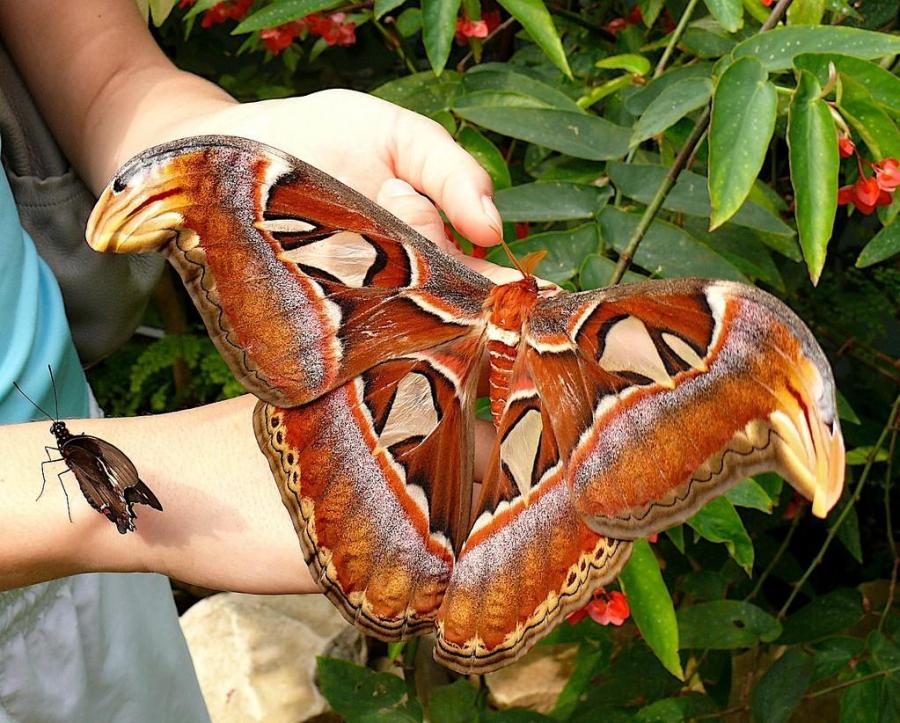
Attacus atlas (Attacus atlas)
Phylum — arthropoda
Class — insecta
Order — lepidoptera
Family — saturniidae
Genus – attacus
Appearance
Attacus atlas is one of the largest lepidopterans, with a wingspan measuring up to 24 cm (9.4 in) and a wing surface area of about 160 cm2 (~25 in2). As in most Lepidoptera, females are noticeably larger and heavier than males, while males have broader antennae.
The body is disproportionately small compared to the wings. The upperside of the wings are reddish brown with a pattern of black, white, pink, and purple lines and triangular, scale-less windows bordered in black. The undersides of the wings are paler. Both forewings have a prominent extension at the tip, with markings that resemble the head of a snake, a resemblance which is exaggerated by movements of the wings when the moth is confronted by potential predators.
Habitat
Attacus atlas lives in Asia, from India to the Philippines and south to Indonesia.
Behavior
These butterflies are twilight species. Butterflies fly late in the evening and in the early morning hours.
Every flight takes valuable energy and can take days off their already short lives, as it has a very short life span of only one to two weeks. They conserve energy by flying as little as possible. A female will wait for a male to come along and be fertilized, lay eggs and die.
Diet
Dusty-green caterpillars feed voraciously on the foliage of citrus, cinnamon, guava, and evergreen trees.
Attacus atlas has a very short, vestigial proboscis, and they do not eat once they have emerged from the cocoon, relying on fat storage for energy.
Reproduction
Females release powerful pheromones through a gland on the end of the abdomen to attract a mate. The female does not stray far from the location of her discarded cocoon. She seeks out a perch where the air currents will best carry her pheromones. Males can detect and home in on these pheromones from several kilometers away using chemoreceptors located on their feathery antennae. Once fertilized, the female lays a number of spherical eggs, 2.5 mm (0.098 in) in diameter, on the undersides of the leaves of food plants.
In captivity
Butterflies are best provided with a spacious, preferably mesh cage or mesh enclosure, located inside the room, which maintains a temperature of +26 - +28 0C and a humidity of 70-80%. Mating takes place in the early morning in the predawn hours.
This species do not mate or mate extremely reluctantly. Most often the refusal to mate is explained by the closely relationships of the partners. If the butterflies do not mate sometimes it is enough to put the male on the abdomen of a calmly sitting female in the evening.
Large white eggs are laid by the female on any surface and can be easily collected by hand, especially if they were laid on a mesh fabric. It is necessary to take eggs, otherwise they may dry out. Incubation of eggs takes place at a temperature of +26 - +28 0C and lasts for 8 days.
The caterpillars of the last instar are greenish in color with massive light blue processes all over the body, covered with a white waxy coating, and reach a length of 10 cm. The pupa is in a dense grayish-brown cocoon. When they are kept at conditions maintained by the keepers they willingly eat the leaves of lilac, poplar, willow, oak.
A butterfly in the imago stage lives for about 10 days.
 Russian
Russian
 English
English























